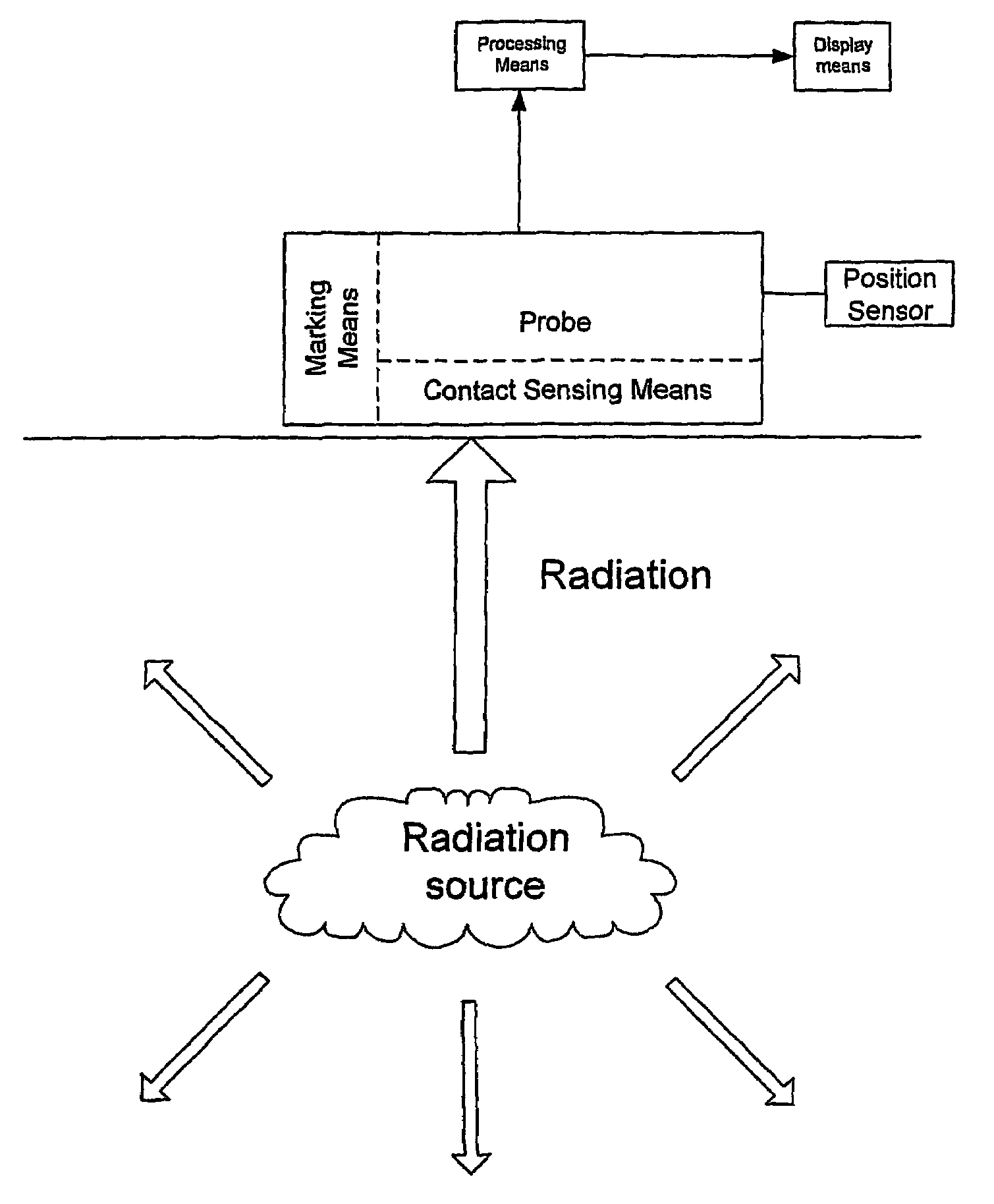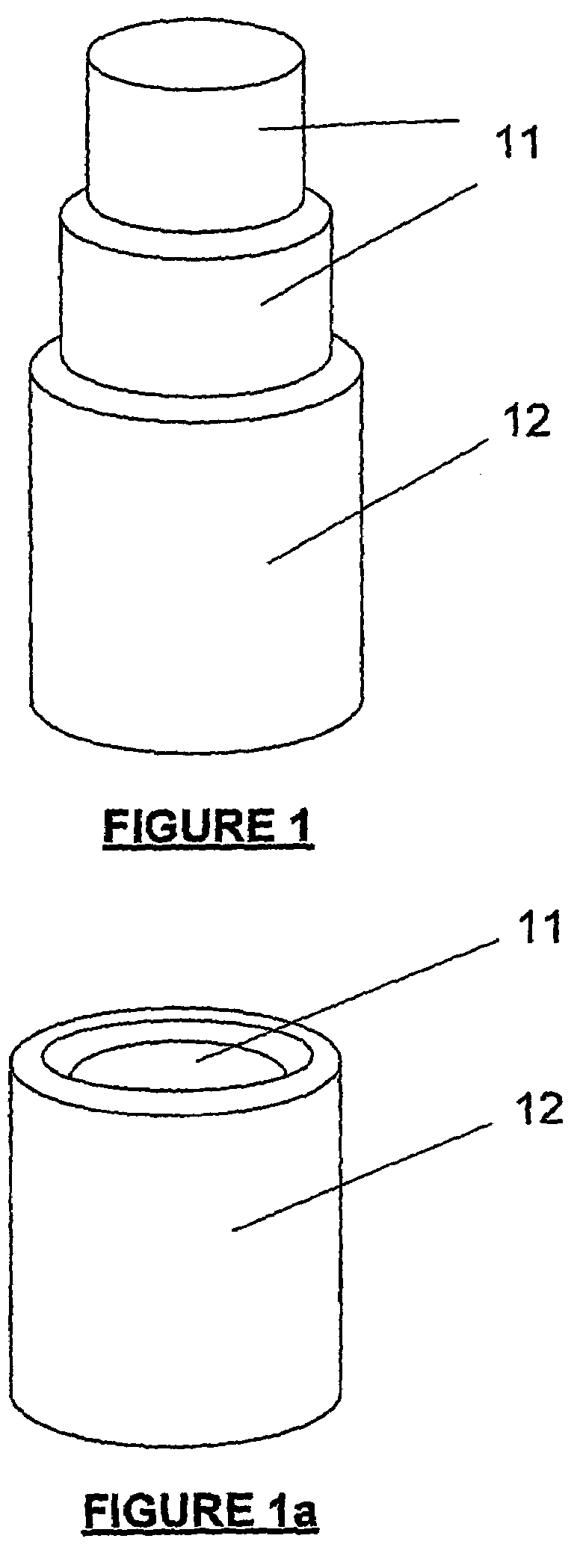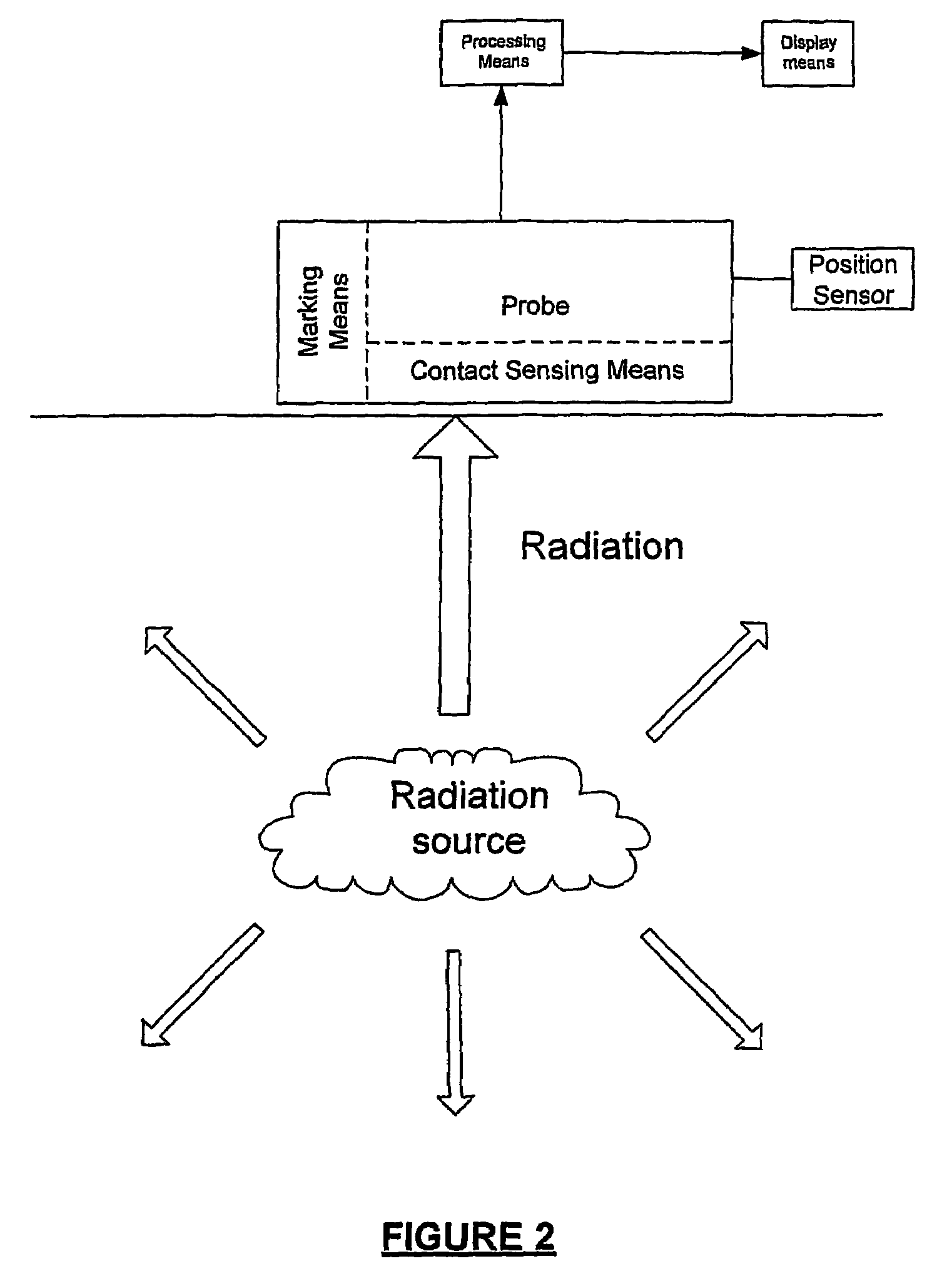Imaging system
a radiation flux and imaging system technology, applied in the field of imaging systems, can solve the problems of reducing the utility of non-imaging radiation probes, inadequate localisation accuracy of radiation sources,
- Summary
- Abstract
- Description
- Claims
- Application Information
AI Technical Summary
Benefits of technology
Problems solved by technology
Method used
Image
Examples
Embodiment Construction
[0018]Non-imaging radiation detection means suitable for use in such a system are known in themselves, and would include a gamma detector, or, more generally, any device capable of detecting ionising or non-ionising radiation (e.g. scintillation detection, solid state detection, photodiode or the like). Such detection means provide a signal related to incident radiation flux from a defined geometrical volume of acceptance. That is, the device will generally have a field of view that is defined, perhaps by collimation.
[0019]Position sensing means suitable for use in such a radiation flux imaging system are known in themselves and provide data enabling the location and orientation of the radiation detection means to be determined. Such means provide three-dimensional co-ordinates of a reference point on the probe, together with angular information relative to at least two orthogonal axes, so allowing the interrogated volume of the radiation detection means to be determined.
[0020]Such ...
PUM
 Login to View More
Login to View More Abstract
Description
Claims
Application Information
 Login to View More
Login to View More - R&D
- Intellectual Property
- Life Sciences
- Materials
- Tech Scout
- Unparalleled Data Quality
- Higher Quality Content
- 60% Fewer Hallucinations
Browse by: Latest US Patents, China's latest patents, Technical Efficacy Thesaurus, Application Domain, Technology Topic, Popular Technical Reports.
© 2025 PatSnap. All rights reserved.Legal|Privacy policy|Modern Slavery Act Transparency Statement|Sitemap|About US| Contact US: help@patsnap.com



